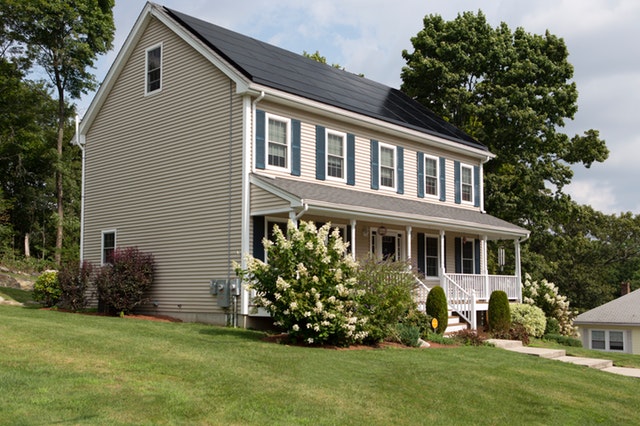Green Energy Tax Credits For Home Improvement & Energy Efficiency
 Many individuals and families are looking for ways to reduce their energy consumption. Running the heater during the winter and the air conditioner during the summer can have significant impacts on someone’s energy consumption and costs. It should come as no surprise that many people are trying to reduce their HVAC usage to save money; however, there is a better way.
Many individuals and families are looking for ways to reduce their energy consumption. Running the heater during the winter and the air conditioner during the summer can have significant impacts on someone’s energy consumption and costs. It should come as no surprise that many people are trying to reduce their HVAC usage to save money; however, there is a better way.
Individuals and families can permanently reduce their fossil fuel usage and carbon footprint by investing in home improvements. Better yet, local, state, and even the federal government wants everyone’s home to be more environmentally conscious, or “green.” Many utility companies want people to act in the same way. That is why there is a slew of incentives for homeowners who are willing to make their homes more Earth-friendly.
Government Tax Credits For Green Initiatives
Many of the tax credits the government is offering for “going green” are going to run through the end of 2021. They are available to any homeowner in the United States who files a federal tax return. Applying for tax credits is done by filling out Form 5695 from the IRS.
Some of the biggest tax credits come from solar energy generation. The first example of a solar energy system comes in the form of a solar water heater. All Energy Star-rated solar water heaters will qualify for this tax credit. Typically, solar water heaters cost somewhere between $2,000 and $5,000.
The other biggest source of solar energy comes in the form of solar panels. Solar panels need to generate electricity directly for the residency and must meet all safety codes. Typically, solar panels cost between $25,000 and $35,000. Even though these sound expensive, the costs are dropping quickly and the tax credit makes the system worth it in the eyes of many homeowners.
Wind Energy
Homeowners can also qualify for green energy tax credits through the use of wind energy. The cost of a wind turbine strong enough to power a home will vary widely. Some may cost $15,000 while others may cost $75,000.
Keep in mind that, in addition to the tax credit, these systems may drastically cut someone’s utility costs. Eventually, these systems should pay for themselves. For this reason, green energy has become an attractive option for many homeowners.
If you are in the market for a new home or interested in refinancing your current property, be sure to consult with your trusted home mortgage professional.
Categories
- Around The Home
- Awards
- Bankruptcy History
- Budget
- Chapter 7 Bankruptcy
- Construction Loan
- Credit
- Credit Scoring
- Environmental Awareness
- Escrow Tips
- Fair Housing
- Federal Reserve
- FHFA
- Financial Crisis
- Financial Fraud
- Financial Reports
- Foreclosure
- Holiday Tips
- Holidays
- Home Building Tips
- Home Buyer Tips
- Home Buying Tips
- Home Care
- Home Care Tips
- Home Decorating
- Home Financing Tips
- Home Maintenance
- Home Mortgage
- Home Mortgage
- Home Mortgage Tips
- Home Mortgages
- Home Seller Tips
- Home Selling Tips
- Home Tips
- Home Values
- Home Values
- Homebuyer Tips
- Homeowner Tips
- Housing Analysis
- Housing Market
- Investment Properties
- Market Outlook
- Mortagage Tips
- Mortgage
- Mortgage Application
- Mortgage Guidelines
- Mortgage Rates
- Mortgage Tips
- mortgage-rates-whats-ahead-september-17-2012
- Organization Tips
- Personal Development
- Personal Finance
- Rankings
- Real Estate
- Real Estate Definitions
- Real Estate Tips
- Real Estate Trends
- Selling Your Home
- Student Loans
- Tax Debts
- Taxes
- The Economy
- Travel
- Uncategorized